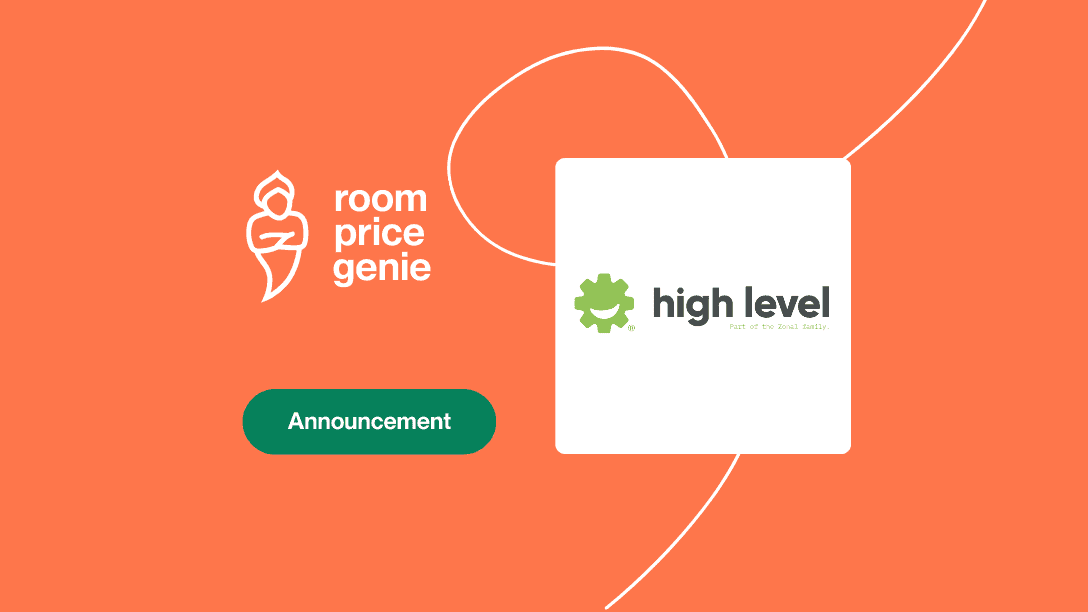Running a hotel is a lot of work. And pricing is often a secondary consideration, with the guest experience coming first. Sadly, the people who give so much energy to the guests may be missing out on many profit opportunities.
We have helped hundreds of small hotels set their prices and make the most of their property, while still having time to care for the guests. And below are some of the things we’ve learned that they weren’t always getting right.
We hope by reading this article you will get some ideas on how to unlock the potential of your hotel.
So, what are the missed opportunities that we see?
1. Having flat pricing through the year or just 2 seasonal rates
Even though the real world is much more nuanced, having flat pricing is still a very common practise and often done out of simplicity rather than anything else. For example, having only one or two rates and publishing them on your hotel channels is a lot easier and less time consuming than having multiple rate plans. This is especially true for hoteliers who are reluctant to invest in hotel technology such as revenue management software. Now, there is so much opportunity for improvement by adjusting to demand and raising prices as you are getting busy.
2. Charging too little
Most hotels would make more revenue if they charged a bit more on average. This has been shown in research. And in our experience, smaller hotels are more likely to do this than larger hotels.
There are a few reasons why they don’t dare to charge more. It is usually some combination of the fear of having empty hotel rooms, not wanting to lower their review scores, or simply because their loyal guests are so used to their prices. Frequently they overlook some of the clear signs indicating the low prices, signs such as filling up too quickly their rooms, missing out on special events and overlooking the ‘value for money’ score on OTAs. By ignoring these indicators hoteliers often don’t realise the true value of their hotel and therefore missing out on making more revenue.
3. No days-of-the-week pricing
For almost all business hotels, Monday is worse than Wednesday. For many leisure hotels, Saturday night is more popular than Friday, but often they have the same price.
By just charging the same amount for all weekdays you are not responding to the different demand on these different nights. And someone who does price cheaper than you on Monday will get more clients on Monday. When they charge more than you on Wednesdays they will get more revenue than you because they know they will get the clients anyway. Hotels would benefit by being more aware of their real demand cycles.
4. Failing to respond to demand changes (on time)
Pricing is not something that we can just set and forget. Hotel demand trends are constantly changing and the response should be dynamic. Unfortunately without a pricing tool that can do this for you, it is difficult. As an example, Steve would spend half an hour to an hour a day on pricing, but still not be able to see all of the changes he needed to make.
Not being able to spot periods with low and high numbers of bookings will also lead to lower revenue. Meaning, if you are getting booked early in advance, you should be raising prices. Conversely, often hoteliers fail to reduce their prices on time so they end up lowering the prices a lot at the last-minute, in which cases, they lower them much more than they are usually willing to go.
In this respect having a pricing tool, like RoomPriceGenie, can really help you keep on top of all of this.
5. Missing out on important events
Concerts, sport games, festivals, trade shows, expos, fairs, school holidays… all of these events influence the demand and consequently your prices. However, many hoteliers are not paying attention to these and notice far too late, if at all.
How many times have you sold out your rooms, long in advance, for a low price, simply because you missed out on an event? You need to be aware of what’s going on in your area and anticipate the demand, as things are changing pretty quickly and you will be too late, most of the time. Once again a revenue management system can help you here.
6. No seasonality of room types
Now, this one is more advanced revenue management (or should I say ‘pricing strategy’) strategy and requires a deeper understanding of the demand for the different room types. For example, in city hotels, single rooms tend to be more popular during weekdays but less popular during weekends. This is because you get more single travellers for business in midweek and more couples and families at weekends. This means that ideally, the gap in the price for singles should be smaller during the weekdays than at the weekends. Similarly, suites and family rooms may be more popular during school holidays, meaning the gap in prices compared to the rest of the rooms should be higher. In RoomPriceGenie making these adjustments is straightforward, and then you can even let us move the gaps around for you, to get even more revenue.
7. Little price difference between Minimum & Maximum prices
Not setting a large enough gap between your minimum price and your maximum price lowers your hotel’s potential, full stop. When pricing your rooms for $100 during the low season and then only $120 for your high season you are really failing to do enough to attract guests when you need them and make more from them when they will pay more. Clients expect to pay more in high season, and the fear of charging too much is the enemy of a lot of hotels here.
8. No use of Length of stay restrictions (LOS)
Another of the more-advanced strategies hotels can adopt are length-of-stay restrictions. We say more advanced because you do need to get them right. Minimum length of stays (Min-LOS) should be used when you don’t want your price to go too high for fear of alienating guests, but at the same time you know there is a lot of demand.
Say you normally charge $100 but RoomPriceGenie tells you that you could charge $300 and still get full, what should you do? One option would be to charge $300. But another might be to charge $200 but put a Min-LOS of 3 nights. That way you make revenue from the nights around without your guest feeling hard-done-by.
9. Not really understanding the importance of dynamic pricing
We do sometimes come across hoteliers who still struggle to see the value in dynamic pricing. They think that it is not for them as they have always done it a certain way and it has worked so far.
The problem here is that hotel market trends are so dynamic and the environment is changing. While at one point people would phone to make a reservation, now they compare you with 100 other hotels before booking. If you don’t keep up, you will find that you get beaten by hotels that use dynamic pricing to increase their revenue and are able to beat you on price. A lot of new hotels have opened in the past few years, AirBnB is making more properties into ‘hotels’, and more and more independent hotels are being taken over by chains; all of these developments increase the competitiveness further. To keep up in this environment means being more dynamic than before.
Conclusion
Pricing your hotel rooms is probably the most important thing to get right for your hotel. There are a lot of small things that you can do to increase your revenue significantly, as we show above. But then, just imagine for one second, the potential of combining all these bits and pieces into one master strategy!
We know that it can be difficult to do all of these things manually, but RoomPriceGenie can do all of this for you, and at the same time and at a price that gives amazing value even to the smallest hotels. Give it a try, there is nothing to lose!







